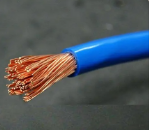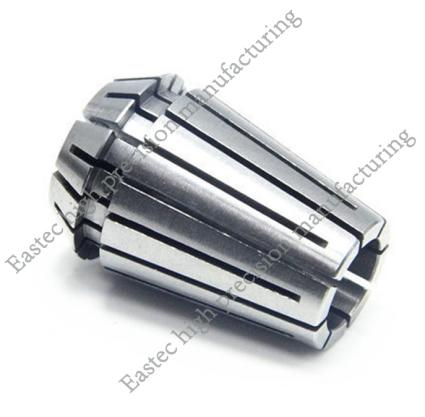In the field of high-precision machining, knowledge about temperature serves as the cornerstone, playing a decisive role in achieving accurate machining. Even the slightest change in temperature can lead to significant deviations in machining accuracy, rendering the pursuit of "high precision" a pipe dream. However, currently, many professionals in the machining industry are enthusiastic about achieving high precision, with a strong desire to reach micron-level machining accuracy. Nevertheless, they have limited knowledge about the impact of temperature on accuracy. Talking about precision without a basic understanding of temperature-related knowledge, they find it difficult to achieve true high-precision machining. Therefore, it is urgent for those in the machining industry to comprehensively understand temperature knowledge.
I. Impact of Temperature Changes on Materials
1. Thermal Expansion and Contraction Characteristics
In the field of precision machining, the thermal expansion and contraction characteristics of materials are crucial factors affecting machining accuracy. When the temperature changes, the size and shape of materials will change accordingly, which cannot be ignored in high-precision machining. Most machines are made of materials such as steel and cast iron, which are affected by room temperature and the heat generated by the machine's operation. For example, in a high-temperature environment, steel will expand, causing the size of parts to increase; in a low-temperature environment, steel will contract, and the size will decrease. Such size changes may prevent parts from meeting the precision requirements of the design, thereby affecting the quality and performance of the entire product. Therefore, in the process of precision machining, the impact of temperature on materials must be fully considered, and corresponding measures should be taken to reduce the errors caused by thermal expansion and contraction.
2. Material Deformation and Expansion Coefficient
The deformation of materials due to thermal expansion and contraction is closely related to the material's own characteristics and the amplitude of temperature change. Different materials have different expansion coefficients, which determine the degree of their size change when the temperature changes. Taking steel and copper as examples, the linear expansion of steel shows that for every 1°C change in temperature per meter of length, there will be a change of 12μm; while the expansion coefficient of copper is 17.7×10⁻⁶/°C. The following is a comparison of the expansion of steel and copper when the temperature changes:
| Material | Expansion Coefficient | Length Change per Meter per 1°C |
|---|---|---|
| Steel | 12×10⁻⁶/°C | 12μm |
| Copper | 17.7×10⁻⁶/°C | 17.7μm |
As can be seen from the table, the expansion coefficient of copper is larger than that of steel. Under the same temperature change, the size change of copper is more obvious. This means that in precision machining, if copper materials are used, the temperature needs to be more strictly controlled to ensure machining accuracy.
II. Detection Errors Caused by Temperature
1. Causes of Detection Errors
During the detection process, if the workpiece and the instruments and gauges used for detection are made of different materials and are not in the standard temperature (20°C) condition, detection errors are likely to occur. Different materials have different thermal expansion coefficients. When the temperature changes, their degrees of size change are different. When the temperature of the detection environment deviates from the standard temperature, the deformation of the workpiece and the detection tool due to thermal expansion and contraction is inconsistent, which leads to a deviation between the measurement result and the actual size, thus generating detection errors and affecting the accurate judgment of the workpiece's precision.
2. Requirements for High-Precision Measurement
When measuring high-precision parts, the precision requirements for the measurement means are extremely high. If the precision index of the measuring instrument or equipment itself is not high, high-precision measurement cannot be achieved at all. Taking a 100mm-long steel gauge block as an example, if it is heated by the temperature of the palm to raise its temperature by 4°C, its length will change by 4.6μm. This shows that even a slight change in temperature can have a significant impact on the measurement result. Therefore, in high-precision measurement, not only the high precision of the measuring tool needs to be ensured, but also the temperature of the measurement environment needs to be strictly controlled to reduce the interference of temperature on the measurement and ensure the accuracy of the measurement result.
III. Machining Concept of Maintaining Thermal Stability
1. Case of Thermal Stability Process
Taking a steel part with a size of 100x30x20mm as an example, the thermal stability process is very obvious. When the temperature is at 25°C, the size of the steel part is 6μm larger; when the temperature drops to 20°C, its size is only 0.12μm larger. This change does not happen instantaneously. Even if the temperature drops rapidly, the steel part needs a certain amount of time to adapt to the temperature change and maintain precision stability. This process is the thermal stability process, which fully demonstrates the impact of temperature on the dimensional precision of the steel part and the importance of thermal stability in high-precision machining.
2. Relationship between Object Size and Thermal Stability Time
Generally, there is a positive correlation between the size of an object and the time required to restore precision stability when the temperature changes. The larger the object, the more complex the internal heat distribution. When the temperature changes, the time for each part to reach thermal equilibrium is longer. In high-precision machining, large-sized parts need more time to restore precision stability after the temperature changes. Therefore, for the machining of large workpieces, more attention should be paid to the thermal stability problem, and temperature control and preheating preparations should be made in advance to ensure machining accuracy.





 Customer service 1
Customer service 1  Customer service 2
Customer service 2